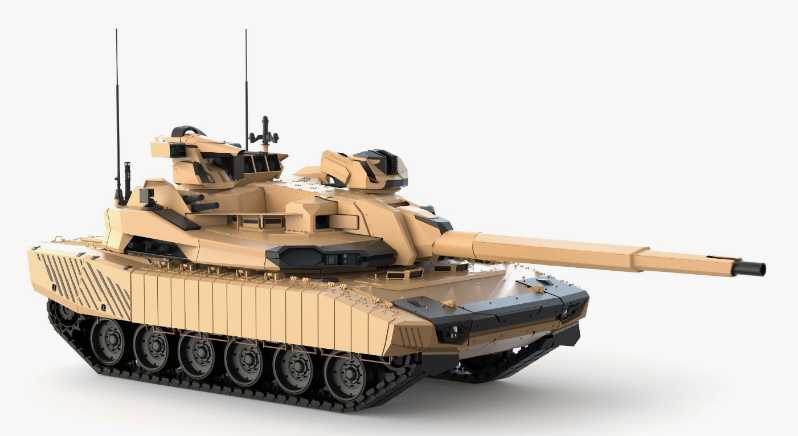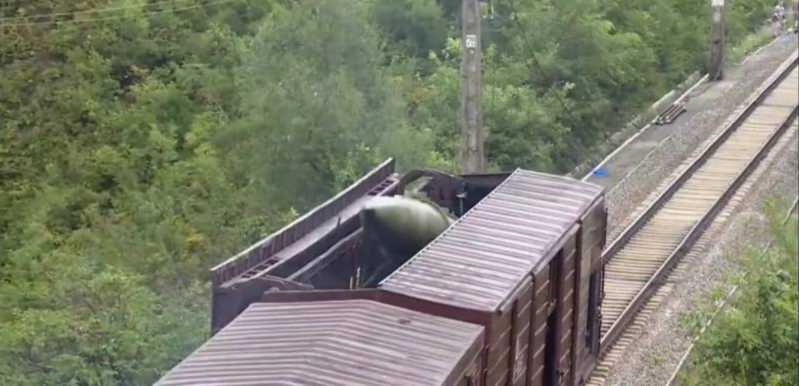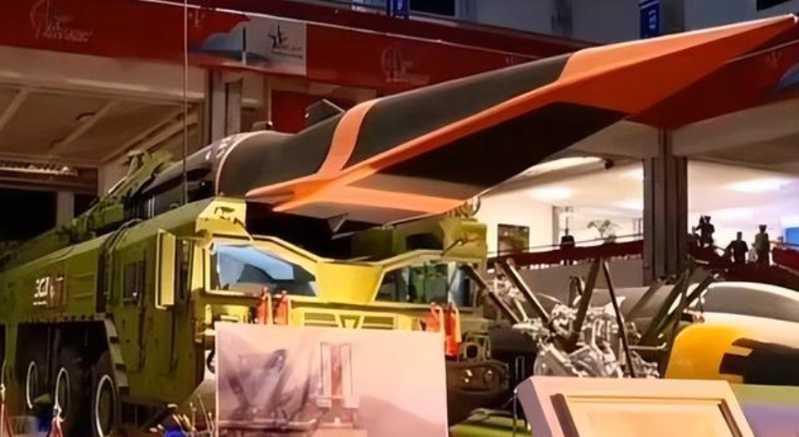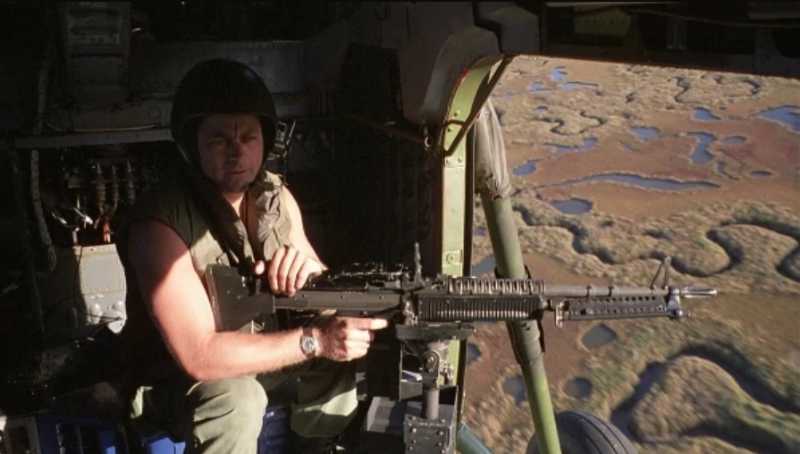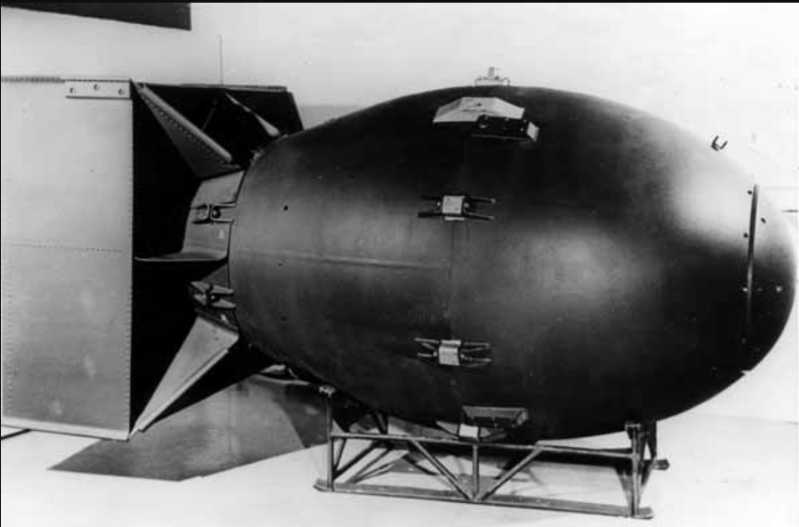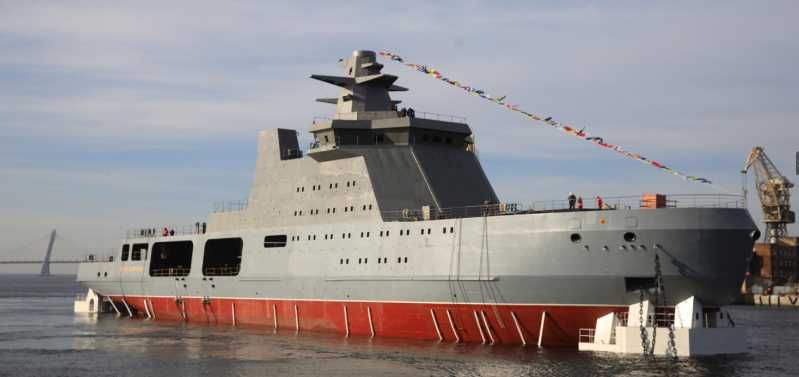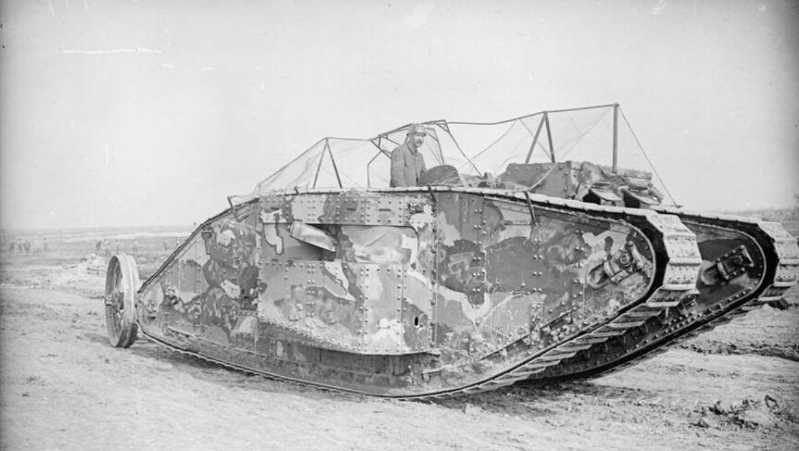At the European Defense and Security Exhibition, which opened on June 17, 2024, the KNDS Group exhibited its latest progress in armored vehicle technology - the "Leclerc Evolution" main battle tank. This high-tech tank is currently under development and represents a new milestone in the combat capability of modern tanks.
Development Overview
For the future development of main battle tanks, many countries have put forward their own ideas in recent years. Among them, Germany and France formed the KNDS Group a few years ago and tried to develop the EMBT "European Main Battle Tank" to explore the technological route of future tanks. KNDS (KMW+NEXTER) was jointly created by Krauss-Maffei Wegmann and Nexter. The two companies are leading European military land system manufacturers headquartered in Germany and France. The KNDS Group has about 9,500 employees. The turnover in 2023 is 3.3 billion euros, the order backlog is about 16 billion euros, and the new order volume is 7.8 billion euros. Its products include main battle tanks, armored vehicles, artillery systems, weapon systems, ammunition, military bridges, customer services, combat management systems, training solutions, protection solutions and various equipment. The establishment of KNDS represents the beginning of the integration of the European land defense system industry. The strategic alliance between KMW and Nexter enhances the competitiveness and international status of the two companies, as well as the ability to meet the needs of their respective national armies. In addition, it provides its European and NATO customers with the opportunity to increase the standardization and interoperability of defense equipment and have a reliable industrial base. The EMBT tank was publicly displayed in 2018. This tank actually combines the chassis of the German "Leopard" 2 main battle tank and the turret of the French "Leclerc" main battle tank. The actual combat power has been limited, but it reveals the general trend that France and Germany will learn from each other’s strengths. On this basis, the designers of the KNDS Group gave full play to their imagination and launched a new demonstration vehicle in 2022.
The new version of the EMBT tank has many unique new designs. The basic design of the EMBT main battle tank is a combination of a modified new layout "Leopard" 2 body and an innovative low two-person turret. The vehicle weighs 61.5 tons. The new EMBT uses a redesigned "Leopard" 2A7+ experimental chassis. The original ammunition rack on the left side of the front of the vehicle has been cancelled, and a new weapon system operator has been added to become the fourth crew member of the EMBT tank to operate the remote weapon station and drone system. Its power system has been upgraded and a new "European Power Pack" (EPP) has been adopted. The original MTUMB873 diesel engine has been replaced by a new 1500 horsepower MTUMT883 high-pressure common rail diesel engine, and the transmission system has also been replaced with a HSWL295 transmission system. The transverse engine layout frees up about 1 meter of space in the power compartment, which is used to add a 200-liter fuel tank, and the rear cooling system has also been modified. Due to its light weight, its mobility is better than that of the "Leopard" 2A7+, with a maximum road speed of 65 kilometers per hour and a combat radius of 460 kilometers.
The tank is equipped with 4 crew members. The driver is located in the front right of the vehicle body. On his left is a weapon operator. The turret is equipped with a vehicle commander and a gunner. It is equipped with an automatic loader and no loader. The two-person turret is lighter, but in order to provide enough operating space for the crew, the turret seat ring is moved 0.2 meters backward on the basis of the "Leopard" 2 body. In order to lower the profile and better protect the crew, the turret is 0.8 meters lower than the "Leclerc" tank on both sides, and the seats of the vehicle commander and the gunner are lowered as much as possible. The tank’s main gun is a Nexter 120mm L52 smoothbore gun, which can fire all NATO standard 120mm tank gun ammunition (including new programmable ammunition). A tail compartment automatic loader is installed at the rear of the turret, with a capacity of 22 rounds. In addition, the main gun also has a 12.7mm coaxial machine gun. EMBT’s main gun can fire the SHARDMk wing-stabilized discarding sabot armor-piercing projectile newly developed by Nexter. Thanks to the longer armor-piercing body, new propellant and increased initial velocity, the performance of the old OFL120F1B armor-piercing projectile has been improved by 20%. The SHARDMk2 with better performance is under development. As a potential improvement, KNDS will integrate a new 140mm "Automatic Loading and Scalable High Performance" (ASCALON, also known as "Ascalon") smoothbore tank gun for EMBT in the future. "The Ascalon tank gun is a brand-new design. The ammunition system adopts a similar buried bullet design. It has two types of ammunition: NLOS guided ammunition and APFSDS armor-piercing ammunition. The muzzle flight body kinetic energy can reach 18~20 megajoules: the improved recoil device allows the system to be integrated into a platform weighing less than 50 tons. The EMBT’s fire control system is based on the "Leclerc". The commander’s panoramic sight system on the left side adopts Safran’s PASEO modular advanced stabilized sighting system, which adopts a non-penetrating design, so it can be suspended above the commander’s hatch. In addition, the commander’s panoramic sight system is also equipped with a 7.62mm machine gun. The PASEO’s sighting line is bidirectionally stable and has complete "hunter-killer" capabilities. It integrates a daytime high-definition TV camera, a third-generation thermal imager, and an eye-safe laser rangefinder.
The gunner on the right uses Safran’s SAVAN-25 gunner’s multi-channel sight, which can integrate third-generation thermal imaging and eye-safe laser rangefinders to provide advanced sensing capabilities. All crew members can obtain image data from each sensor through the display, and the modular design allows for rapid installation of subsystems. As required, the gunner is equipped with an optical sight capable of handling targets more than 3 kilometers away. 22 rounds of main gun ammunition are obviously a bit too little, but they are more than enough to deal with many targets, so an additional ARX-30 remote weapon station developed by Nexter is installed on the right side above the turret. This is a land-based modified version of the helicopter’s airborne weapon, equipped with a 30x113mm 30M781MG machine gun, 150 rounds of ammunition, and a maximum elevation angle of 60 degrees. It can replace the main gun to attack some bunkers and lightly armored targets. The ARX-30 remote weapon station is equipped with Exavision’s "NEPTUS" optoelectronic search system, which integrates uncooled thermal imagers, daytime and laser ranging channels, and can aim and fire 30mm ammunition with proximity fuses to attack enemy drones. In order to improve the situational awareness of the entire vehicle, a French Metravib PilarV acoustic sensor is installed behind the commander’s hatch. PilarV can detect sniper gunfire, and the direction of the detected sound source will be displayed on the screen. Then the turret or weapon station will automatically turn to the threatening position for counterattack. In addition, EMBT has optoelectronic cameras (23 in total) of the 360-degree local situational awareness system developed by Optsys installed around the turret, on the front, side skirts, and rear of the vehicle body to provide the crew with omnidirectional situational awareness capabilities. E The MBT’s hull has been comprehensively redesigned, with two crew members located at the front of the vehicle, and equipped with front armor components and anti-mine armor to improve protection performance. Currently, KNDS also provides vehicle-mounted drones, such as the FINDEAGLE vehicle-mounted drone integration system.
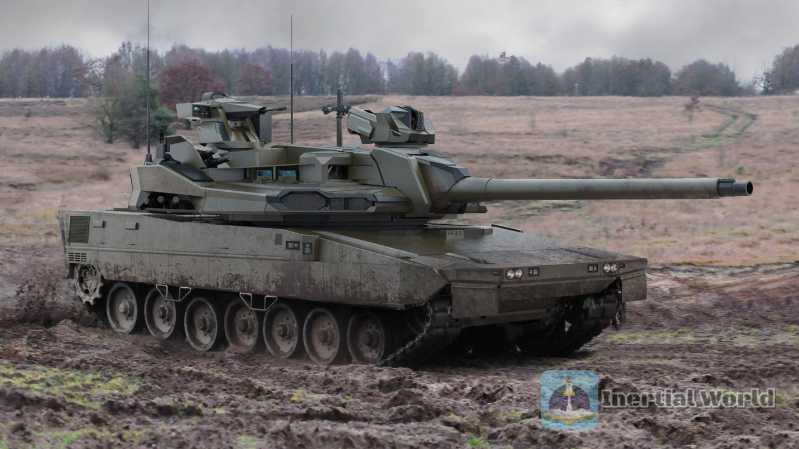
As an improvement in comprehensive survivability, the EMBT has been upgraded with the European Trophy Group’s "Trophy" hard-kill active protection system and Elbit’s laser warning system (E-LAWS). The turret is equipped with the ELM-2133 "Windbreaker" phased array radar for active protection system detection and the matching E-LAWS laser warning system. The turret side is equipped with an active protection system launcher, MEFP interception warhead, automatic loader, and armored shield. These improvements allow the EMBT to detect various incoming threats in advance and directly destroy enemy anti-tank missiles. EMBT has a reconfigurable human-machine interface system, which allows dynamic task allocation and testing of "innovative crew concepts" with a variable number of crew stations. Therefore, Nexter also proposed a 3-person crew configuration with the commander transferred to the side of the driver (the result is the EMBT-ADT 140 main battle tank), and there will be potential configuration options for 2-person crews in the future.
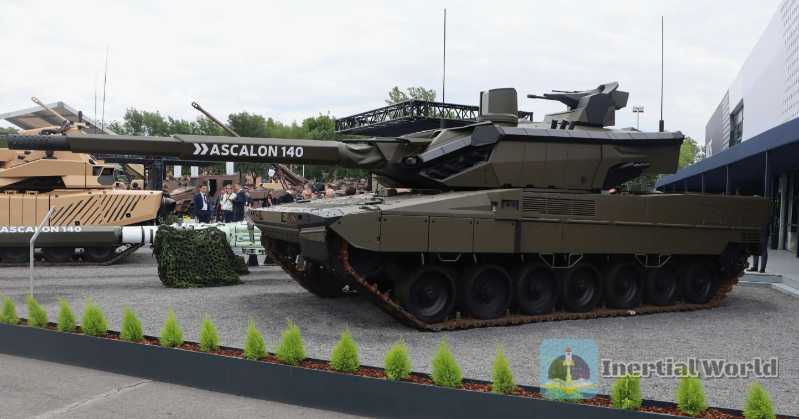
A little analysis shows that the main gun and auxiliary weapons of the EMBT tank are completely accommodating to the French. Both France and Germany have kept their hands. Germany soon launched the "Leopard" 2A8 and continued to follow the path of independent improvement. The French launched the "Leclerc" XLR (XLR stands for the French Char Leclerc Rénové (Leclerc refurbished tank), in theory, can be equipped with a new 140mm smoothbore gun. In this way, the prospects of EMBT are not optimistic. Germany’s Rheinmetall company also independently developed the KF51 "Black Panther" tank equipped with a 130mm smoothbore gun. Obviously, the 140mm gun that France loves is not to the Germans’ taste. The "Leclerc" XLR tank weighs 63 tons and has a variety of upgrades to extend its service life. These upgrades include: Atos’s "Scorpion Combat Command System" (SICS) battlefield management system; Tellez’s "Digital Tactical and Theater Communications Device" (CONTACT); Tellez’s BARAGE anti-IED wireless jammer; FN Herstal’s deFNder medium remote control The remote controlled weapon station, also known as the T2B remote controlled weapon station (TTO), replaces the prototype vehicle’s Aquis Hornet light remote controlled weapon station (also known as the T2 weapon station); new GPS navigation system; anti-RPG and mine protection armor kits based on the new AZUR armor kit; AmSafe’s Tarian fence and composite fabric armor; new commander and gunner crew operating stations; new ballistic computer; the 18-round rotary magazine on the right front of the vehicle body is cancelled, and only the 22-round automatic loader in the rear compartment of the turret is retained to enhance survivability; a new fire control system is modified for the current CN120-F1 smoothbore gun to fire the new 120mm SHARD tail-stabilized armor-piercing projectile and 120mm IM3M high-explosive multi-mode programmed projectile.
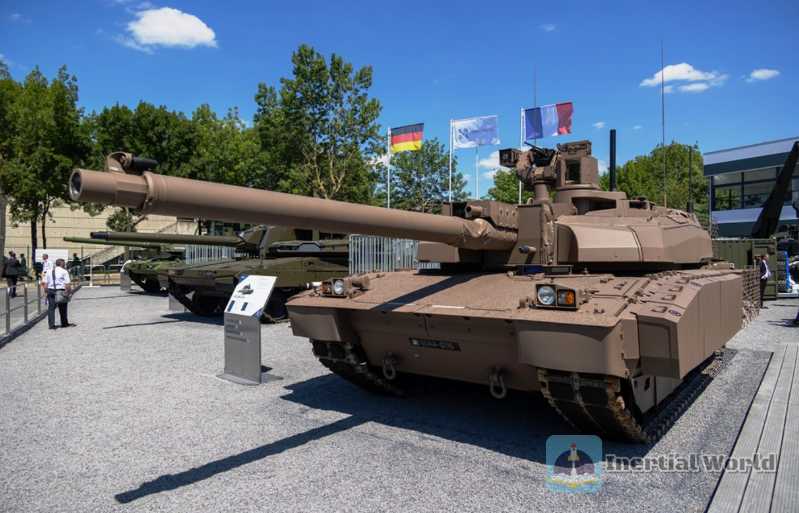
Soldiers from the 2nd Company of the 501st Combat Tank Regiment of the French Army have begun testing the brand new "Leclerc" XLR main battle tank. According to data released by the French Ministry of Defense, by 2023, the French Army will receive a total of 18 upgraded "Leclerc" XLR tanks. At present, the French Army has signed an XLR upgrade contract for 100 "Leclerc" tanks, and the procurement goal is to refurbish and upgrade all 200 tanks. Unlike the "Leclerc" XLR prototype exhibited at the 2018 European Defense Exhibition, the mass-produced "Leclerc" XLR has a heightened commander’s remote weapon station base to increase the depression angle to attack close-range targets. In addition to the "Leclerc" tank, its matching "Leclerc" repair vehicle will also undergo a similar refurbishment and upgrade to the DCL-R standard. Unlike the XLR tank’s Wartsila V8X-1500 supercharged engine, the DCL-R is equipped with MTU’s MT883 diesel engine as a power source.
It should be added that according to the information from the recent French National Assembly hearing, the French Army has decided to add a new hard-kill active protection system to the "Leclerc" XLR tank. There are currently several possible options for it to use: one is the "Prometheus" hard-kill active protection system developed by the French Armaments General Directorate (DGA) and the French companies Nexter and Tellez Group for the "Scorpion Project". This is an interceptor-type active protection system with multiple groups of distributed interceptors and detection radars installed at the four corners. The other is the "Trophy" active protection system of Israel’s Rafael Advanced Defense, which has been successfully installed on the EMBT main battle tank of the KNDS Group. The result of this improvement idea is the "Leclerc Evolution" main battle tank that appeared at this year’s defense exhibition. It integrates the research results of the EMBT tank, and its comprehensive performance has been greatly improved, which is not inferior to Germany’s latest "Leopard" 2A8 tank (the turret has stronger protection performance, but the combat weight is 65~67 tons).
Basic performance
The "Leclerc Evolution" main battle tank is basically a second-generation EMBT tank turret launched in 2022 installed on a deeply improved "Leclerc" tank chassis, and the old CN120-F1 tank gun is replaced with a new "automatic loading and scalable high-performance gun" dual-caliber firepower system, and the EMBT’s "Leclerc four-person crew concept" is introduced. The "Evolution" tank weighs 62 tons, which is 1 ton lighter than the "Leclerc" XLR tank, which is equivalent to the second-generation EMBT tank. The body of the "Leclerc Evolution" main battle tank is a significantly modified new chassis design, in which the power compartment is equipped with MTU’s "European Power Pack", including a 1,500-horsepower MT883 high-pressure common rail diesel engine and an HSWL295 transmission system, which replaces the V8X-1500 supercharged engine and ESM-500 transmission system that have been used in the French version of the "Leclerc". The tank has a maximum speed of 68 km/h, a maximum road range of 470 km, and a ground clearance of 475 mm. The "Leclerc Evolution" tank adopts a four-person crew design, with the gunner at the left front of the turret body, and a new assistant commander at the right front of the body to assist in operating the rest of the tank subsystems. A 120mm caliber ASCALON120 smoothbore gun is installed on the two-person turret of the "Leclerc Evolution" main battle tank, with a caliber ratio of up to 58, which greatly increases its power. It can fire all NATO standard 120x570mm ammunition. At the exhibition, KNDS Group provided two types of ammunition for the main gun of "Leclerc Evolution", namely SHARDMk1 tail-stabilized armor-piercing shells and M3M programmed high-explosive grenades.

The new 120mm manned ASCALON turret of the "Leclerc Evolution" main battle tank is equipped with a tail-type automatic loader with 22 rounds of ammunition. The turret gun mount can be upgraded to the new 140mm 48-caliber ASCALON140 smoothbore gun, and the automatic loader will be modified to accommodate 18 rounds of 140mm ammunition. Since the 140mm ammunition is 300mm longer than the 120mm ammunition, the loader will compensate through different system settings. In order to upgrade the 140mm smoothbore gun, the rear compartment of the turret of the "Leclerc Evolution" has been lengthened by 30 cm to accommodate the upgrade. Like the second-generation EMBT, the commander’s panoramic sight system on the left side of the "Leclerc Evolution" turret is a Safran PASEO modular advanced stabilized sighting system with a non-penetrating design. In addition, the commander’s panoramic sighting system is also equipped with a 7.62mm self-defense machine gun. The PASEO sighting line is bidirectionally stable and has complete "hunter-killer" combat capabilities. It integrates daytime high-definition TV cameras, third-generation thermal imagers, and human eye-safe laser rangefinders. The gunner on the right uses Safran’s SAVAN-25 gunner’s multi-channel sight, which can integrate third-generation thermal imaging and human eye-safe laser rangefinders to provide advanced sensing capabilities. In addition to these, a French Metravib’s PilarV acoustic sensor is installed on the right rear of the turret to warn of threats. Like the second-generation EMBT, the Leclerc Evolution MBT is equipped with the ARX-30 remote weapon station developed by the French company KNDS. Its main weapon is a 30x113mm 30M781MG cannon with anti-drone capabilities. The ARX-30 remote weapon station will be operated by the assistant commander, while the commander himself has a 7.62mm remote-controlled machine gun parallel to the periscope. In addition, there is a 12.7mm coaxial machine gun on the left side of the main gun, which can be used to attack various soft targets. As an additional improvement, the Leclerc Evolution has a triple cruise missile launcher installed on the left rear of the turret, that is, on the left side of the ARX-30 remote weapon station. In addition to providing additional self-defense capabilities, it can also be used as an out-of-area weapon to attack non-line-of-sight targets. This is borrowed from the KF51 "Black Panther" tank, but the design is more compact and does not affect the ammunition carrying capacity of the tail compartment. The turret is stacked with so many complex and conspicuous equipment that it is easy to be hit and catch fire in an urban street fighting environment, resulting in loss of sighting capability. The Merkava series tanks exposed this problem in the street fighting in Gaza. How to prevent top-attack weapons, "Leclerc Evolution" did not propose a practical and effective solution.
The "Leclerc Evolution" tank has greatly improved the body protection performance. The new NERA reactive armor module is installed above the front of the vehicle, and the passive armor module extending to the bottom is installed under the front. AZUR reactive armor side skirts are also installed on the side of the body to protect the vehicle. The practice of the Russian-Ukrainian conflict has exposed the protection weaknesses of Western tanks. It is a general trend to install explosive reactive armor to enhance protection. As an improvement in comprehensive survivability, the "Leclerc Evolution" is upgraded with the "Trophy" hard-kill active protection system of the European Trophy Group. The ELM-2133 "Windbreaker" phased array radar for active protection system detection is installed on all four sides of the turret. The side of the turret is equipped with a main defense system launcher, a MEFP interception warhead, an automatic loader, and an armored shield. These improvements enable the "Leclerc Evolution" to detect all kinds of incoming threats in advance and directly destroy enemy anti-tank missiles. As part of the active protection system, the "Leclerc Evolution" is equipped with an optoelectronic warning window manufactured by KNDS Optoelectronics (formerly Optsys) next to the radar, which can be combined with the Galix close protection system smoke grenade launcher installed on the side of the turret to provide timely battlefield concealment for the vehicle. In addition, the 360-degree local situational awareness system of KNDS Optoelectronics is installed at the four corners of the turret: to provide omnidirectional situational awareness capabilities for the crew. According to the French representative of KNDS, the "Leclerc Evolution" is not actually competing with the improved model of the "Leopard" 2 in the future. It is an intermediate solution between the "Leclerc" and the future "Major Ground Combat System" (MGCS). In fact, this statement means that France will still equip the "Leclerc" series tanks designed by itself to maintain the survival of its military-industrial enterprises and maintain its independence. Germany will continue to purchase improved models such as the Leopard 2A8 (using an upgraded power system to continue its advantage in mobility)
Conclusion
The emergence of the "Leclerc Evolution" tank means that France and Germany have obvious differences in the exploration of future tanks. The two sides have no intention of equipping the same tank in the future, but want to use each other’s funds, technology and reputation to improve themselves. As for whether the caliber of the main gun of the future tank will continue to insist on the 120mm smoothbore gun or choose a 130mm or 140mm main gun, and whether the turret will be manned or unmanned, the two sides have obviously not reached a consensus. The new Leopard 2A-RC3.0 main battle tank, the EMBT-ADT140 main battle tank, and the Leopard 2A8 main battle tank KF51-U concept unmanned turret (CUT) demonstration vehicle, which also appeared at the exhibition, reflect the current multiple explorations of Western countries on the future tank research and development model. Unlike the KNDS Group, which is obsessed with the caliber of the tank’s main gun, Rheinmetall insists on equipping its demo vehicle with a 130mm smoothbore gun. The emergence of its KF51-U tank unmanned turret and other new tanks has also proved that tanks still have tenacious vitality (both offensive and defensive, highly maneuverable and protective, and can carry a large number of advanced information and intelligent equipment), and are still an indispensable and important equipment for the future army. As for the combat mode, the "Leclerc Evolution" tank may use its powerful battlefield situation awareness capabilities to hide behind the front line and fight in a mobile manner, providing accurate long-range strike firepower for the mechanized troops to advance (especially to eliminate enemy drone controllers and command centers), rather than blindly attacking when drones and cruise missiles are flying all over the sky.


